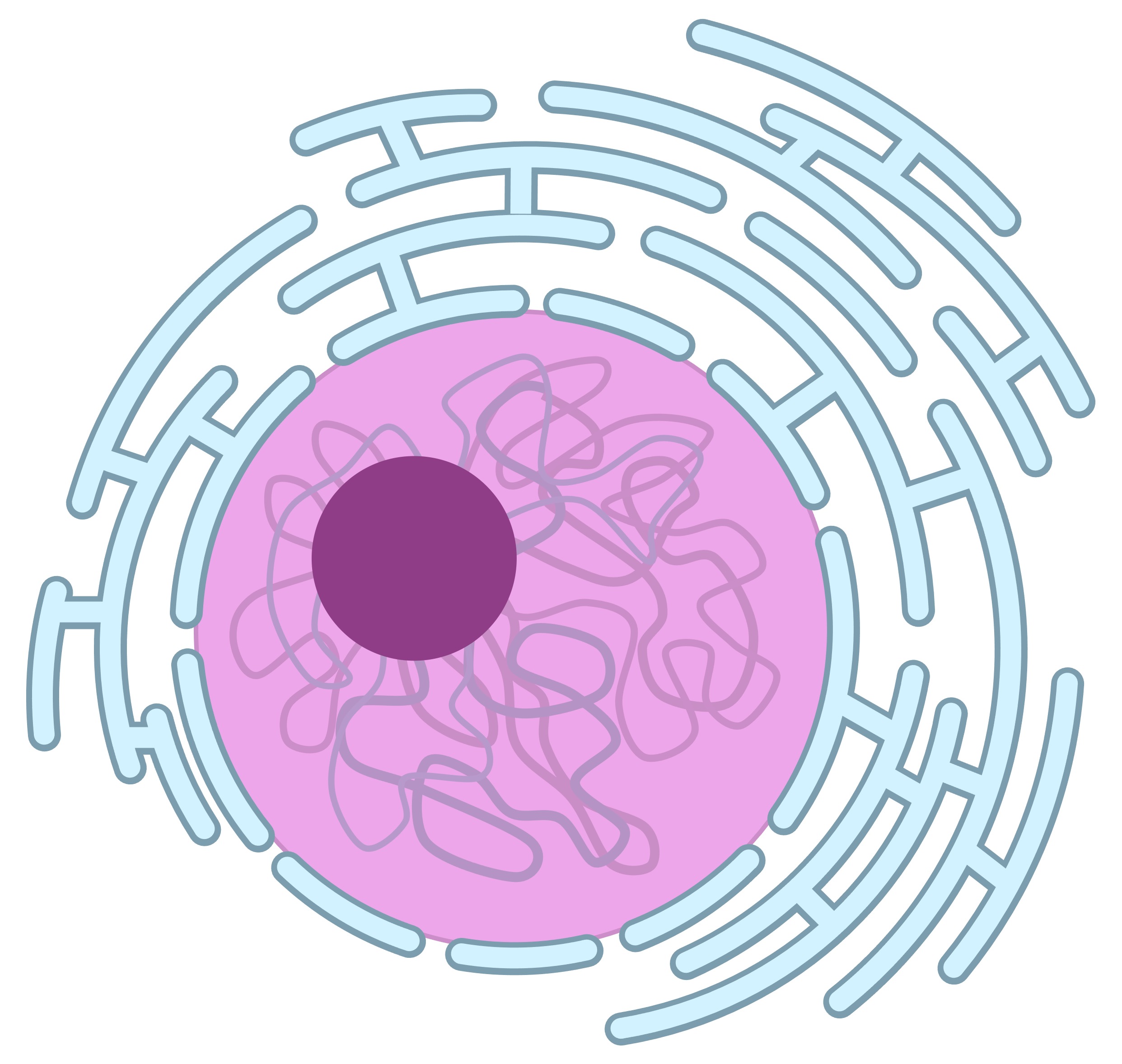

Nucleus
The nucleus stores the genetic material of the cell as chromatin (DNA + histone proteins)
-
The chromatin is contained within a gel-like solution called the nucleoplasm (as opposed to the external cytoplasm)
-
By housing the cell’s genetic material, the nucleus acts as a control centre (regulates the expression of genetic instructions)
The nucleus is surrounded by a double membrane called the nuclear envelope, which is embedded with pores
-
The nuclear envelope is a double membrane structure because it is part of the endomembrane system (it is connected to the ER network)
-
This means that proteins synthesised by the ER can access the nucleus without requiring vesicular transportation
-
The nuclear envelope also functions as a barrier to separate the processes of transcription and translation (prokaryotes lack this separation)
-
The presence of pores allows the cell to control the rate at which these interlinked processes can occur (coordinates gene expression)
A double membrane is also beneficial to the process of mitosis and meiosis (nuclear division in eukaryotic cells)
-
During these processes, the nuclear envelope must be disassembled to allow the chromosomes to be sorted and separated
-
Because it is a double membrane structure, the envelope can break down into vesicles – these can be reconstituted to reform the nuclear envelope at the end of the division process
Structure of the Nucleus

2D Representation





